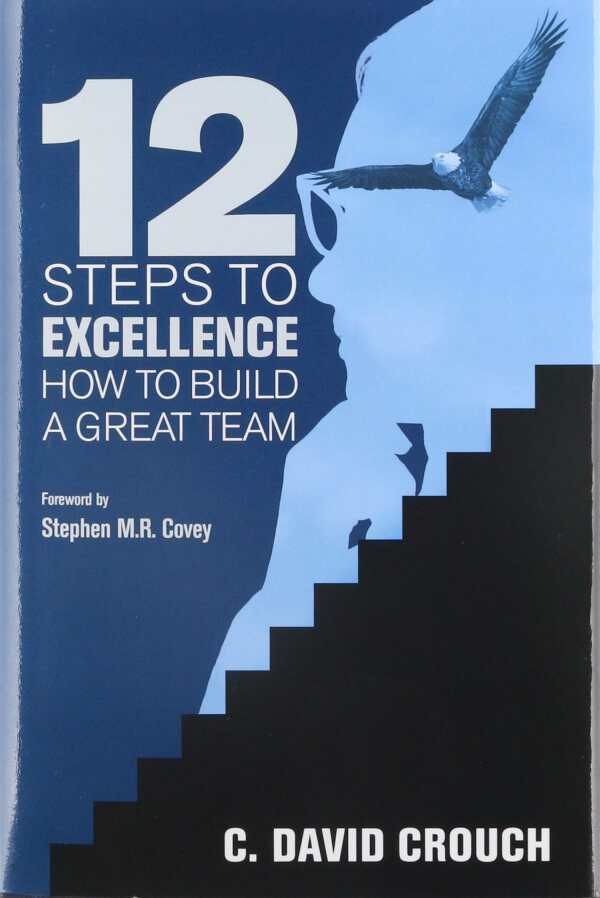It looks like you've stumbled upon a page meant to be read by our code instead of viewed directly. You're probably looking for this page.
12 Steps to Excellence
12 Steps to Excellence is a practical and valuable workplace guide.
C. David Crouch’s business book 12 Steps to Excellence is designed to improve the performances of individuals and teams.
Written for corporate and organizational leaders, the book turns to Aristotle for its philosophy of team building: “Excellence is not an act, but a habit.” Its approach is direct and applicable within a wide range of industries, nonprofits, and school and community groups. Its steps are drawn from research into theories of excellence and into the practices that distinguish large, successful corporations like Disney, Southwest Airlines, and Caterpillar from their peers.
Its work straightforward, the book also makes abundant use of Crouch’s practical knowledge, gained as an organizational consultant to executives and leaders in diverse fields, including health care, manufacturing, energy, and construction. A self-proclaimed “excellentologist,” Crouch combines his personal experiences with theory well, resulting in a practical handbook.
The first step, language, is presented as the core of any excellent organization, one that helps to convey and inspire commitment to its mission and culture of excellence. Subsequent chapters cover follow-up stems like defining a mission, developing a vision, and focusing on quality and customer care. Each chapter includes a clear explanation, often complemented by illustrations or examples of how it works in practice. Chapter summaries include action steps that make the book especially useful as a blueprint for a planning or staff retreat.
Common workplace problems are acknowledged, including negativity and organizations that exhibit mediocrity, with corresponding and concrete advice for fixing them and inspiring a culture of trust. The inclusion of such specific, practical suggestions for team exercises bolster this work. These center on activities like defining organizational principles and establishing effective performance measure. The final chapter explores the qualities of an effective leader and proposes guidelines for determining dependability, integrity, and accountability. The twelve steps are merged by the book’s concluding advice: “If you want to build a great team, discipline yourself to do what you need to do to get there.”
In addition to its straightforward organization and accessible prose, the book’s attention to personal and moral aspirations is distinguishing. This focus threads throughout the book, making it more than a series of team-building exercises. Beyond results and profits, the book’s concept of excellence builds toward living “a life that matters.”
12 Steps to Excellence is a practical and valuable workplace guide for achieving organizational excellence.
Reviewed by
Deborah Hopkinson
Disclosure: This article is not an endorsement, but a review. The publisher of this book provided free copies of the book and paid a small fee to have their book reviewed by a professional reviewer. Foreword Reviews and Clarion Reviews make no guarantee that the publisher will receive a positive review. Foreword Magazine, Inc. is disclosing this in accordance with the Federal Trade Commission’s 16 CFR, Part 255.
